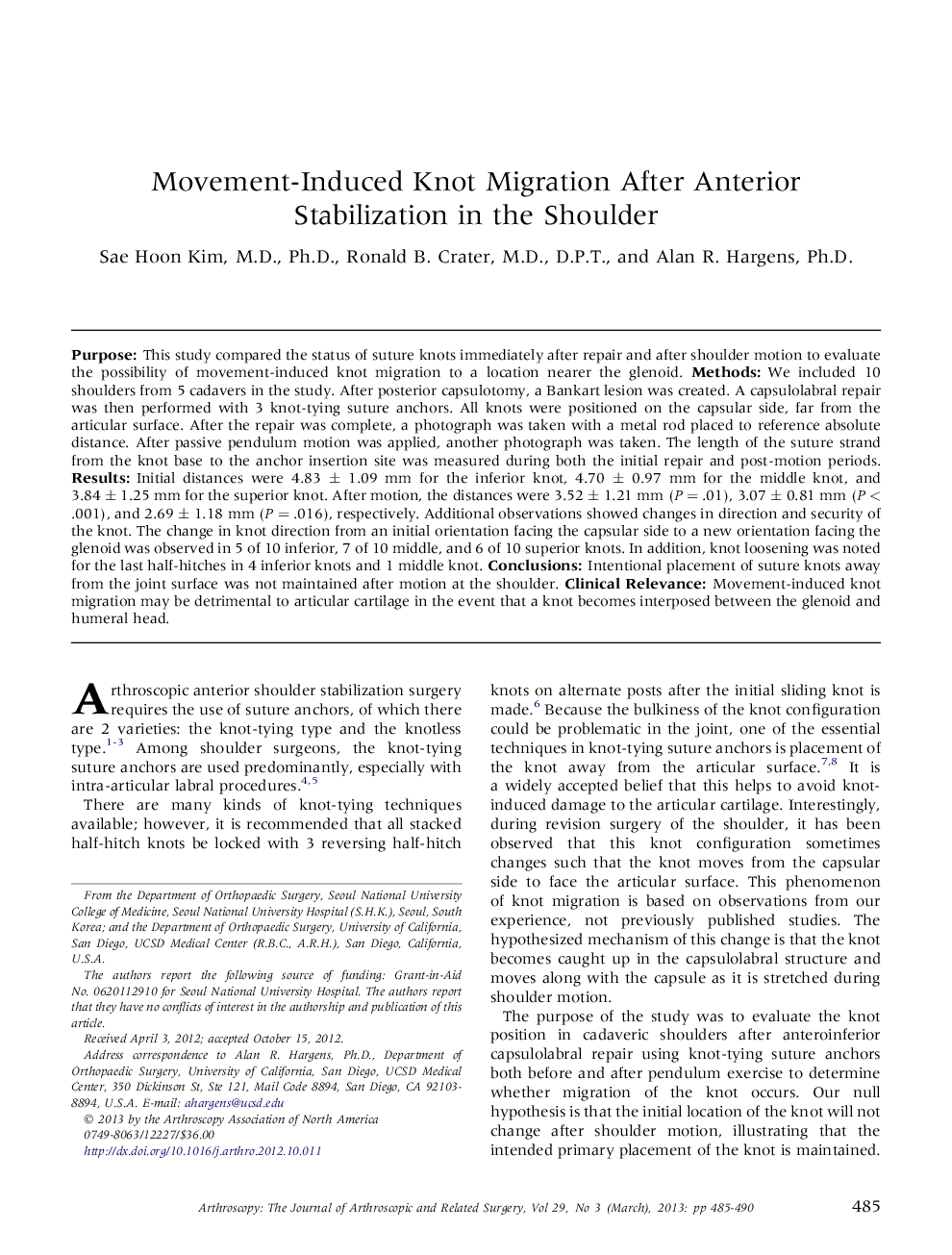| Article ID | Journal | Published Year | Pages | File Type |
|---|---|---|---|---|
| 4044075 | Arthroscopy: The Journal of Arthroscopic & Related Surgery | 2013 | 6 Pages |
PurposeThis study compared the status of suture knots immediately after repair and after shoulder motion to evaluate the possibility of movement-induced knot migration to a location nearer the glenoid.MethodsWe included 10 shoulders from 5 cadavers in the study. After posterior capsulotomy, a Bankart lesion was created. A capsulolabral repair was then performed with 3 knot-tying suture anchors. All knots were positioned on the capsular side, far from the articular surface. After the repair was complete, a photograph was taken with a metal rod placed to reference absolute distance. After passive pendulum motion was applied, another photograph was taken. The length of the suture strand from the knot base to the anchor insertion site was measured during both the initial repair and post-motion periods.ResultsInitial distances were 4.83 ± 1.09 mm for the inferior knot, 4.70 ± 0.97 mm for the middle knot, and 3.84 ± 1.25 mm for the superior knot. After motion, the distances were 3.52 ± 1.21 mm (P = .01), 3.07 ± 0.81 mm (P < .001), and 2.69 ± 1.18 mm (P = .016), respectively. Additional observations showed changes in direction and security of the knot. The change in knot direction from an initial orientation facing the capsular side to a new orientation facing the glenoid was observed in 5 of 10 inferior, 7 of 10 middle, and 6 of 10 superior knots. In addition, knot loosening was noted for the last half-hitches in 4 inferior knots and 1 middle knot.ConclusionsIntentional placement of suture knots away from the joint surface was not maintained after motion at the shoulder.Clinical RelevanceMovement-induced knot migration may be detrimental to articular cartilage in the event that a knot becomes interposed between the glenoid and humeral head.
